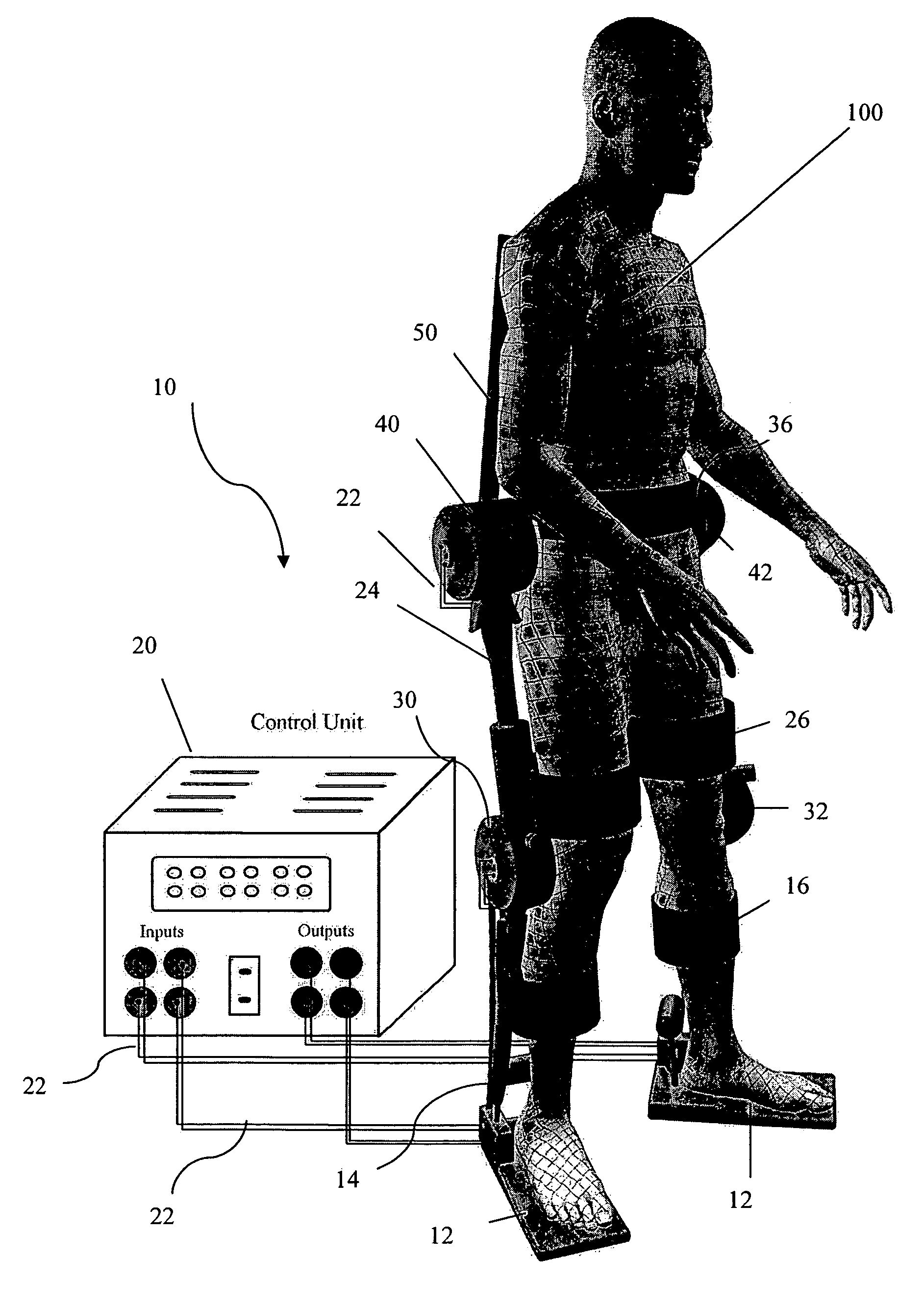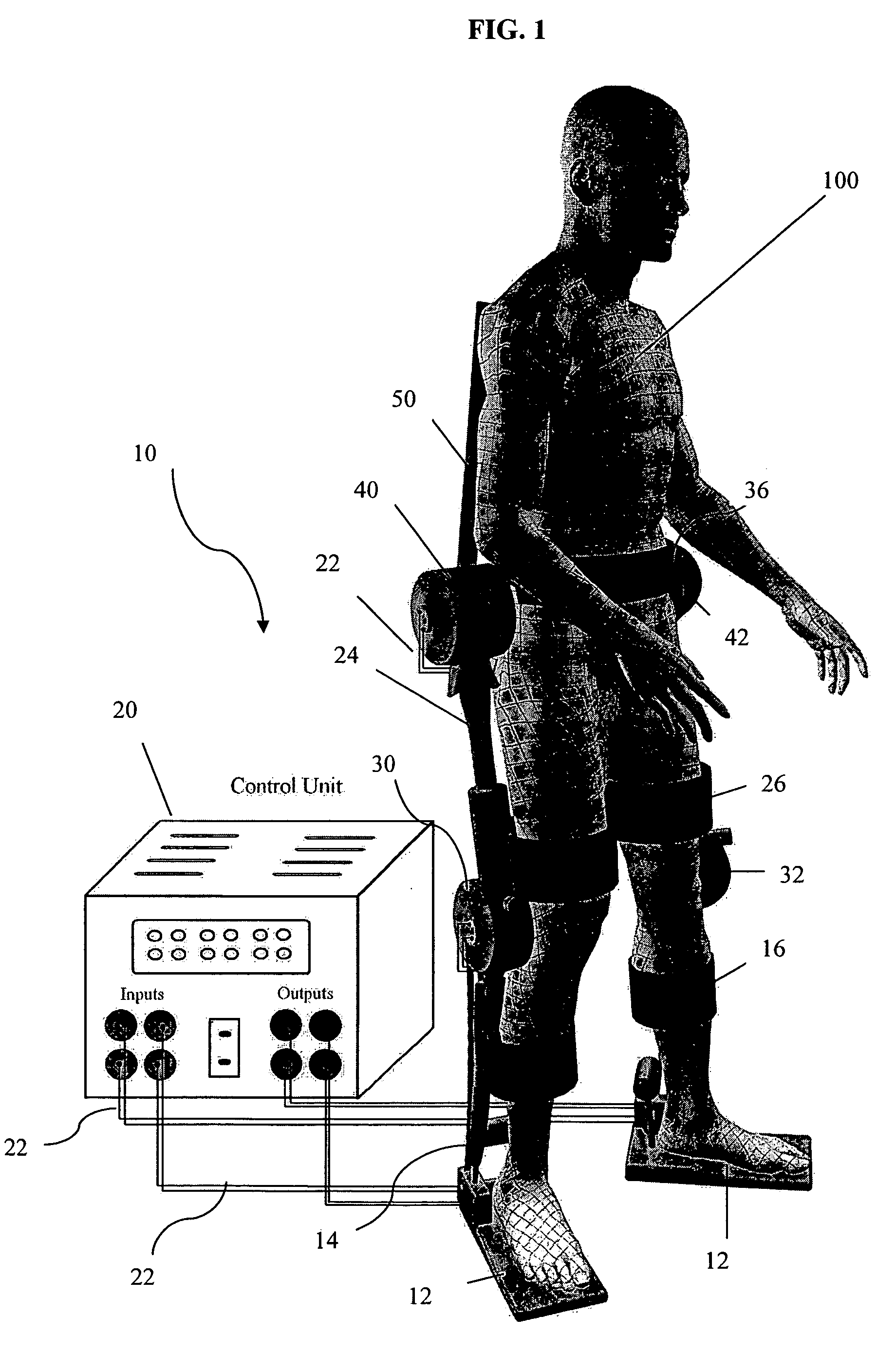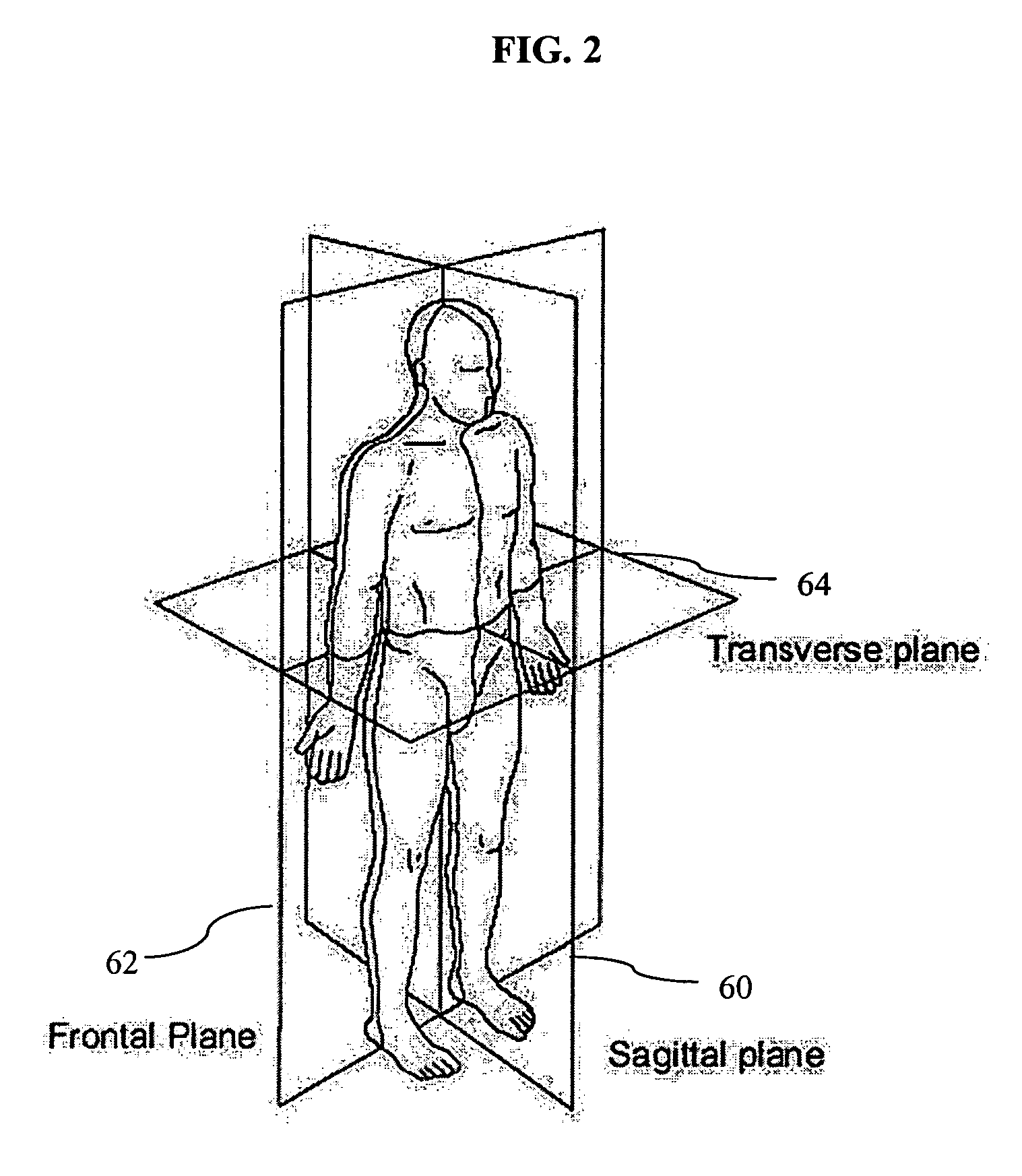Exoskeletal device for rehabilitation
a technology of exoskeleton and rehabilitation, which is applied in the field of equipment, can solve the problems of scarring of the tissues around the joints, affecting the mobility of the replaced joints, and requiring patients to undergo rehabilitation but a difficult process
- Summary
- Abstract
- Description
- Claims
- Application Information
AI Technical Summary
Benefits of technology
Problems solved by technology
Method used
Image
Examples
Embodiment Construction
[0016]The lightweight modular exoskeletal device (a biped robot) of the present invention fits the lower extremities of patients requiring rehabilitation due to neuromuscular injuries; hip, knee, ankle replacement surgery; or other infirmity. Although the device could be used in different stages of rehabilitation such as sitting, standing, and walking, one feature of the device is in assisting the patient to exercise in the standing position. The design is modular such that two rotary actuators located at any of the possible four hip and knee joints can be used during the earlier standing phase of rehabilitation thus reducing weight and power requirements. The control and computing hardware are stationary such that the patient does not have to carry any additional load. During the walking stage of rehabilitation, all four actuators are installed. The device is attached to patients as illustrated in FIG. 1 and provides controlled knee and hip motions while keeping the torso in a stab...
PUM
 Login to View More
Login to View More Abstract
Description
Claims
Application Information
 Login to View More
Login to View More - R&D
- Intellectual Property
- Life Sciences
- Materials
- Tech Scout
- Unparalleled Data Quality
- Higher Quality Content
- 60% Fewer Hallucinations
Browse by: Latest US Patents, China's latest patents, Technical Efficacy Thesaurus, Application Domain, Technology Topic, Popular Technical Reports.
© 2025 PatSnap. All rights reserved.Legal|Privacy policy|Modern Slavery Act Transparency Statement|Sitemap|About US| Contact US: help@patsnap.com



